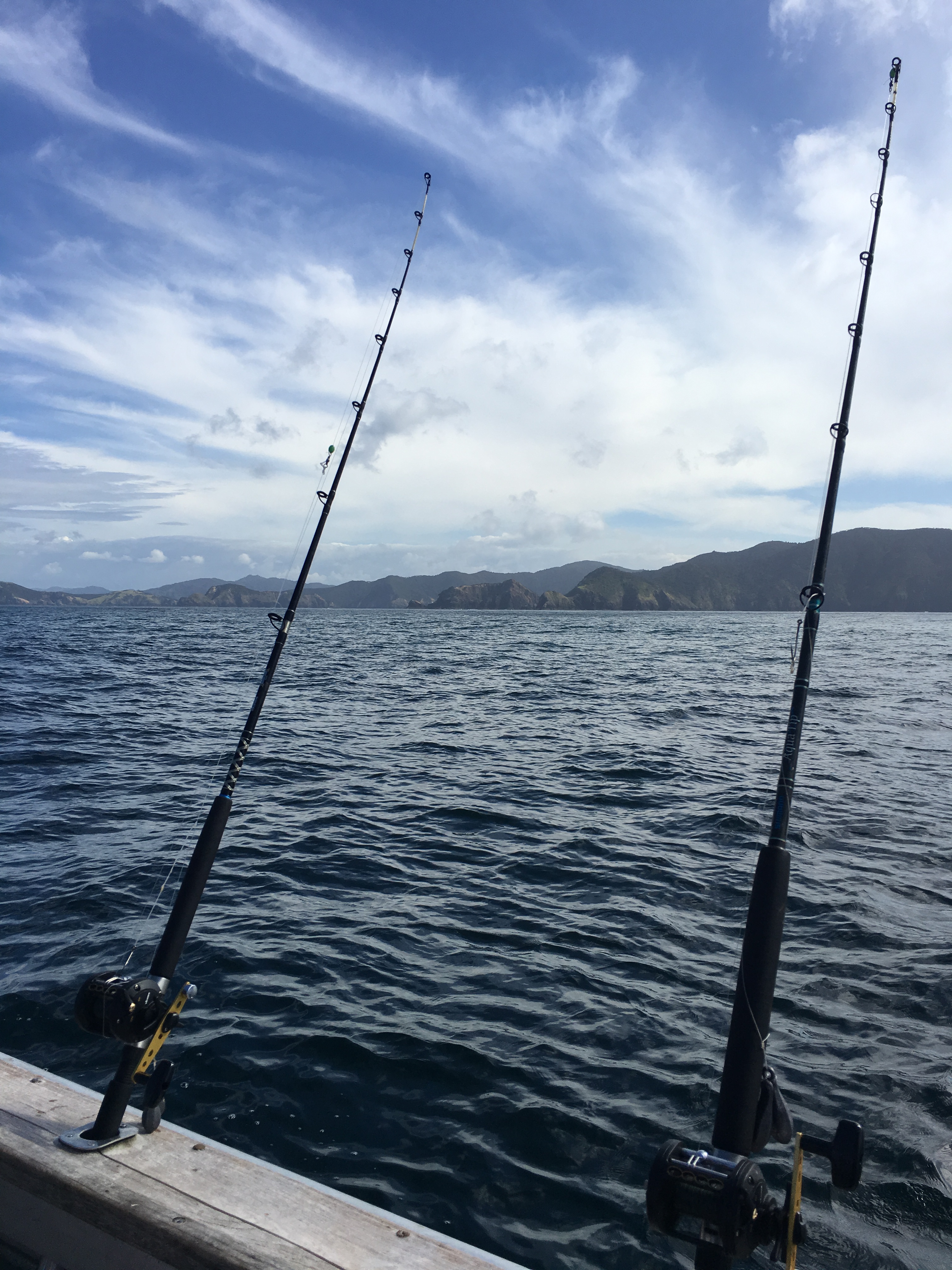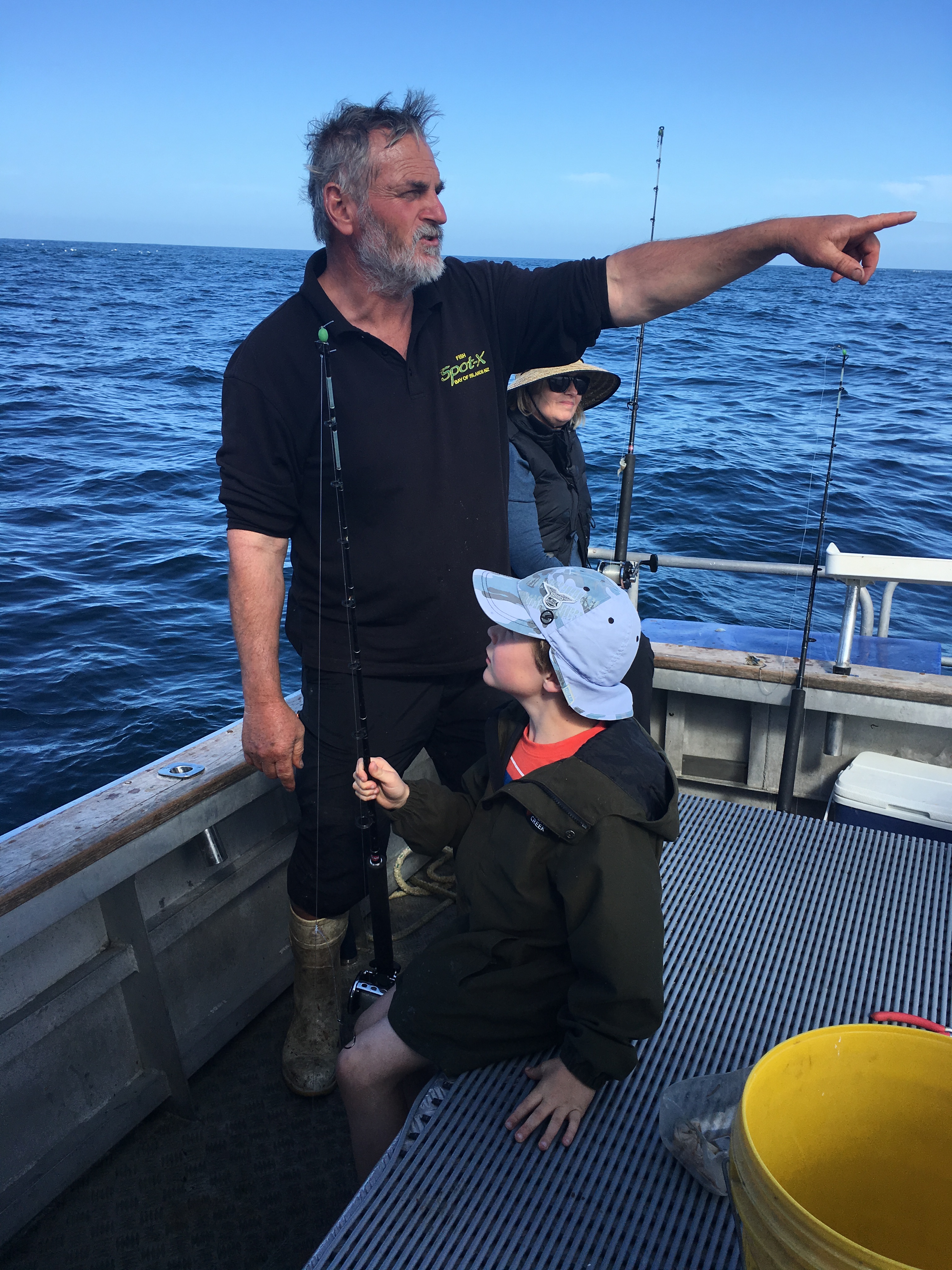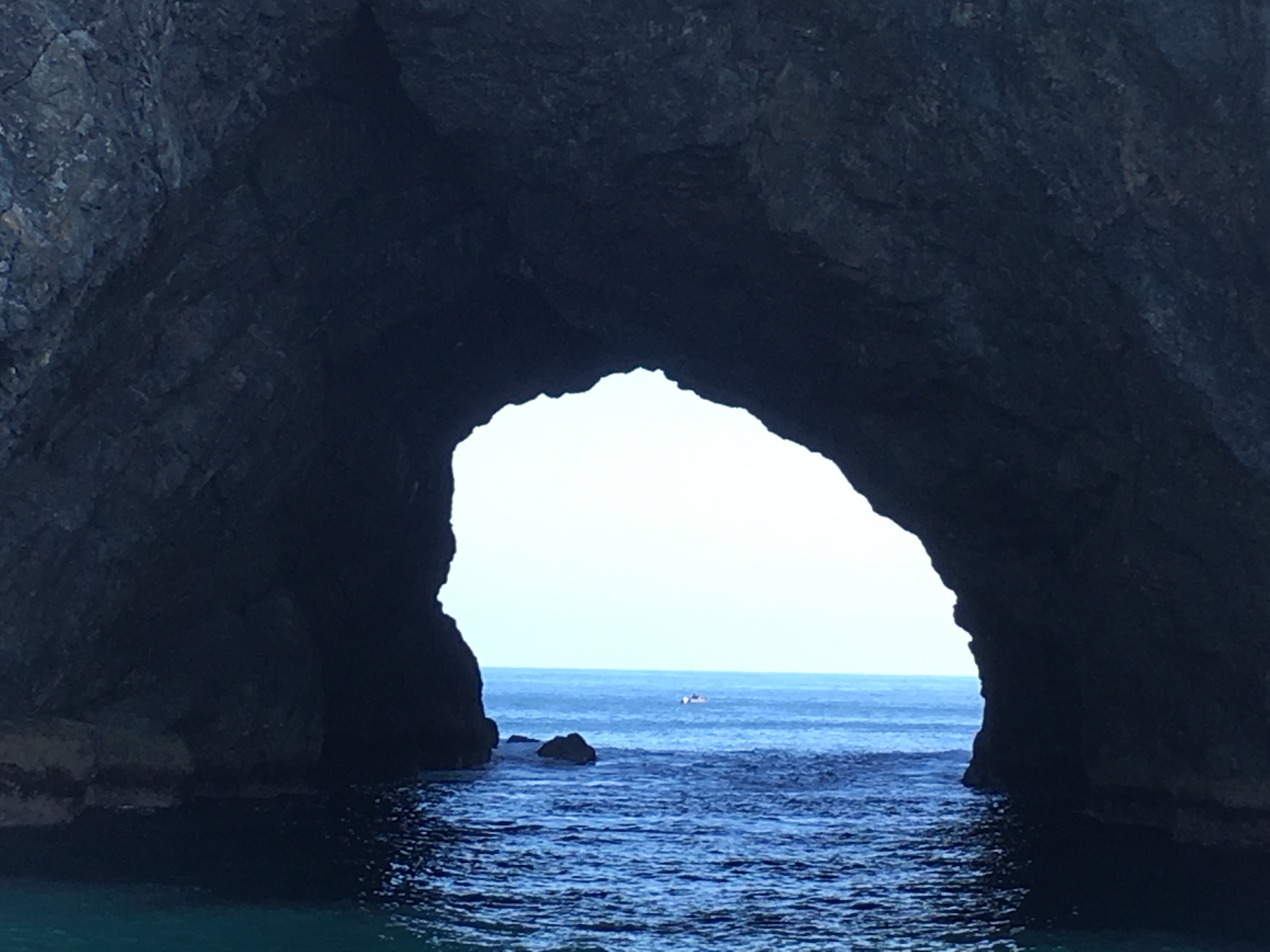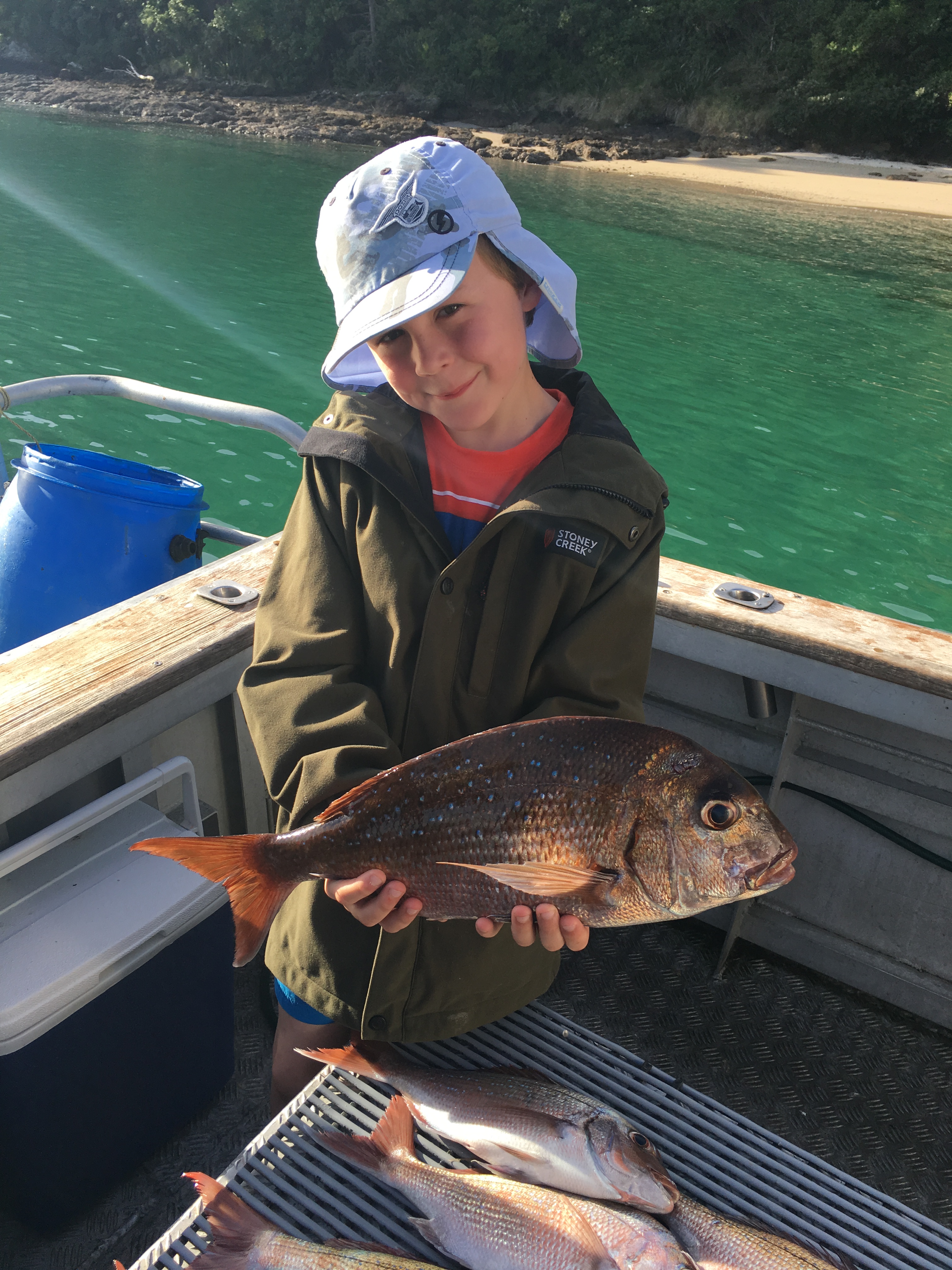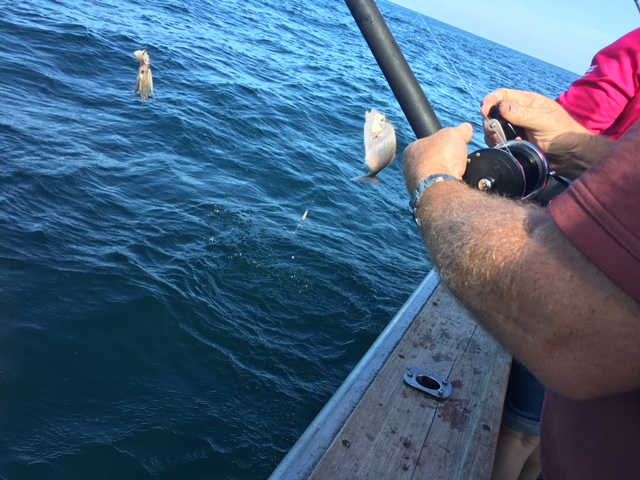A Snapping Good Time In New Zealand

The following appears in the November issue of California Sportsman:
Story and photos by Chris Cocoles
RUSSELL, New Zealand— If I came for the trout, I left with the snapper.
New Zealand called me for many reasons during an early October visit: mild weather, whitewater rafting, world-class wine and some of the friendliest locals on Earth to share a pint with.
But while I anticipated any fishing I’d do would be on some crisp freshwater lake for the country’s iconic rainbows and at a cost that would inflate an already ballooning travel budget, my inner angler was satisfied and made possible by a skipper who I’m positive hasn’t walked on dry land in 50 years.
Here I was – a couple days off a 12-hour flight from San Francisco – boarding Capt. Jeff Crooks’ boat with Spot-X Fishing Charters on a sun-splashed spring afternoon so far from home. Soon I’d forget about booking a trout trip and would be reeling in supper in the form of snapper from the Pacific Ocean and having the time of my life.

“WELCOME TO MY OFFICE,” Crooks said when I joined him on the bridge of the Spot-X. It’s hard to imagine a more spectacular view than from this workspace. NewZealand is blessed with some of the planet’s most diverse vistas – from snow-capped peaks, glaciers and fjords on the less populated South Island (we didn’t have near enough time to get there on this eight-day trip), to the pristine beaches, cozy fishing villages and vineyards of the North Island.
Here in the far north of the country, Crooks pilots his fishing vessel through azure blue waters between a rocky archipelago known as the Bay of Islands, a popular getaway for residents of New Zealand’s largest metropolis of Auckland, a three-hour drive south.
Crooks, a typically jovial “Kiwi” with a salt-and-pepper beard and spiked hair, was straight out of central casting for a grizzled seaman.
“I was conceived on a boat,” he said, and you get the impression that he may not be joking. His dad was an accomplished sailor from Auckland who competed and won a prestigious competition, the almost 100-year-old Lipton Cup. It is New Zealand’s oldest yachting competition and features 22-foot crafts – many that date back as old as the race itself – commonly known by locals as “mullet boats” (his father won the race in 1962 and Crooks was born in 1963, so do the math on buying that conceived-on-a-boat bit).
“I knew that’s all I wanted to do,” Crooks said of having a life on the water. He too would follow in Dad’s footsteps and win a Lipton Cup trophy himself. Crooks built wooden boats for a living but escaped the big city for the Bay of Islands eight years ago, and he’s been skippering this boat for the last few seasons.
Katarina Jung and her family have owned Spot-X (fishspotx.co.nz) for the last year. They are Swedes who came to New Zealand on an entrepreneurial visa.
“We started up a fishing shop in Russell, Screaming Reels (screamingreels.co.nz), and took over Spot-X, which had been operating in the bay for 16 years,” Jung says. “It had a very good reputation when we bought it and we work to keep that and improve it, giving the guests an unforgettable experience of the Bay of Islands.”
Now if only more Americans would experience it. I was stunned when Crooks told me that only about 5 percent of his guests come from the U.S. “Mostly Aussies, but we get a lot of Germans and (other) Europeans,” he said.
It’s difficult to envision anyone not being content to visit. Surely the Jungs were OK with trading the Nordic winters they endured to live here in the temperate climate of the South Pacific.
On our way to the fishing grounds – these waters are also known for kingfish, marlin and tuna, the latter two of which are targeted on longer trips further offshore – Crooks motored us past his favorite (unnamed) beach. I could see why; it’s a magnificent stretch of white sand and crystal-clear blue water that Robinson Crusoe types might reconsider wanting rescue from.
Then he asked his seven passengers how many of us had been through the Hole in the Rock (Motu K?kako as it’s known in the native M?ori dialect), a 60-foot-tall opening on what the explorer Capt. James Cook renamed as Piercy Island upon his discovery of it in 1769. When the weather cooperates and the tides are right, boats both small and bigger can navigate through the hole, which we did to great enthusiasm from our party. (And when Crooks suggested we do it, I laughed and mentioned that earlier that same day my travel buddy Norv and I went through the hole when we took a dolphin-watching cruise and quick visit to a nature reserve, Urupukapuka Island.)
Enough of the sightseeing, I thought. Let’s go fishing.
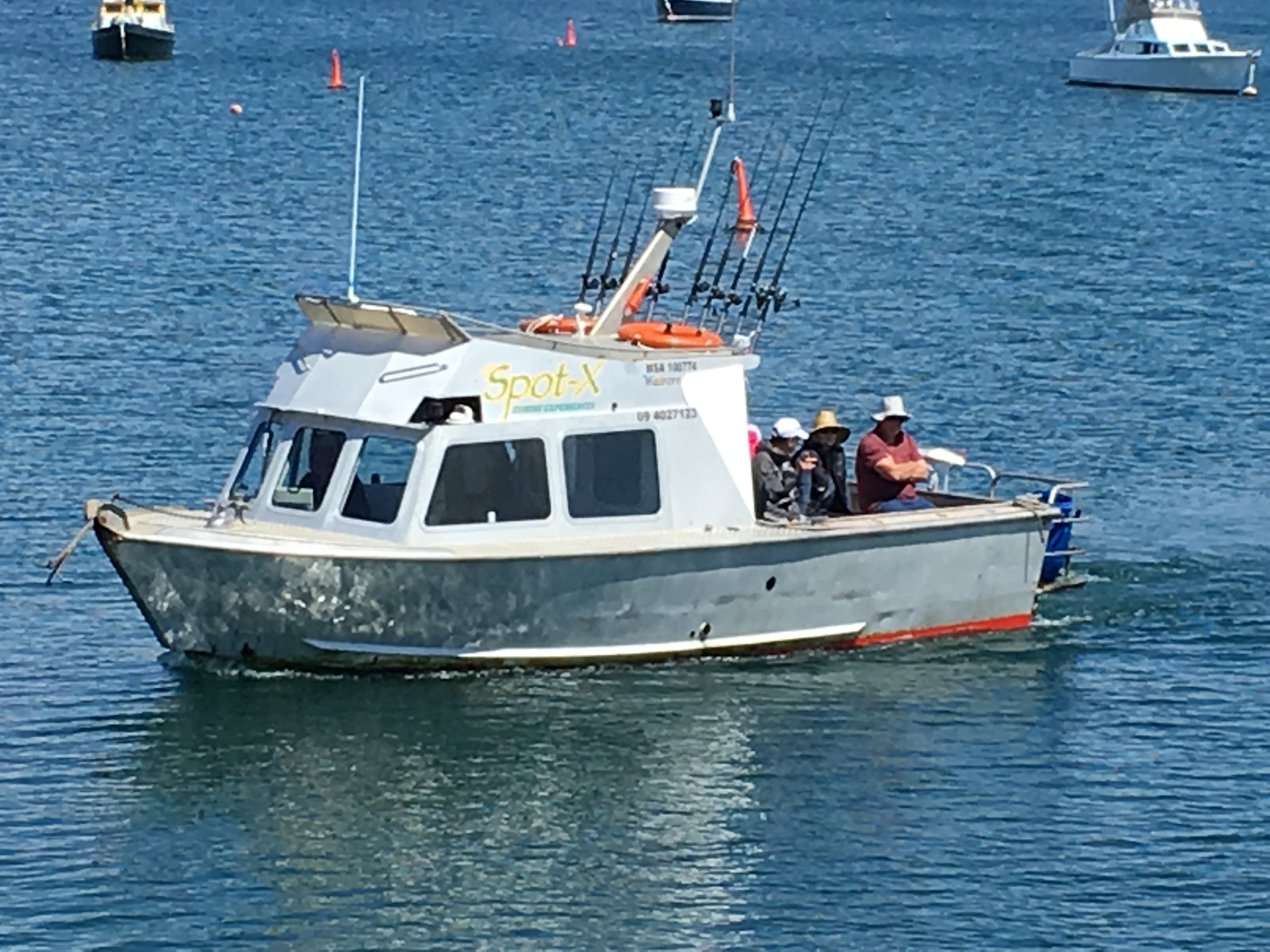
CATCHING SNAPPER IN THESE waters doesn’t require anything fancy. Crooks handed us all spincast rods with 50-pound test rigged with just a heavy sinker, a short leader and a hook. Our first spot was not far beyond the Hole in the Rock, around the other side of Cape Brett at the edge of the Bay of Islands.
In about 90 feet of water, Crooks anchored the boat and pulled out a bag of cut squid, gave a 20-second tutorial on where to bait the hook, and we dropped down to the bottom, cranked up a few feet and waited.
“I can’t guarantee you we’ll always catch a bunch of fish,” Crooks had told us earlier. “But I can guarantee you I won’t give up trying to catch a bunch of fish.”
I was one of two Americans onboard. When I was first picked up as the last passenger at the marina in Russell, I struck up a conversation with Ethan Gaddy, an 18-year-old who hails from North Carolina’s Outer Banks. He graduated high school in June and shortly thereafter flew to New Zealand and had been there since. By the time he’d left to go home Gaddy would have visited just about every major spot in a country of just about 4.4 million residents and comparable in size to Colorado.
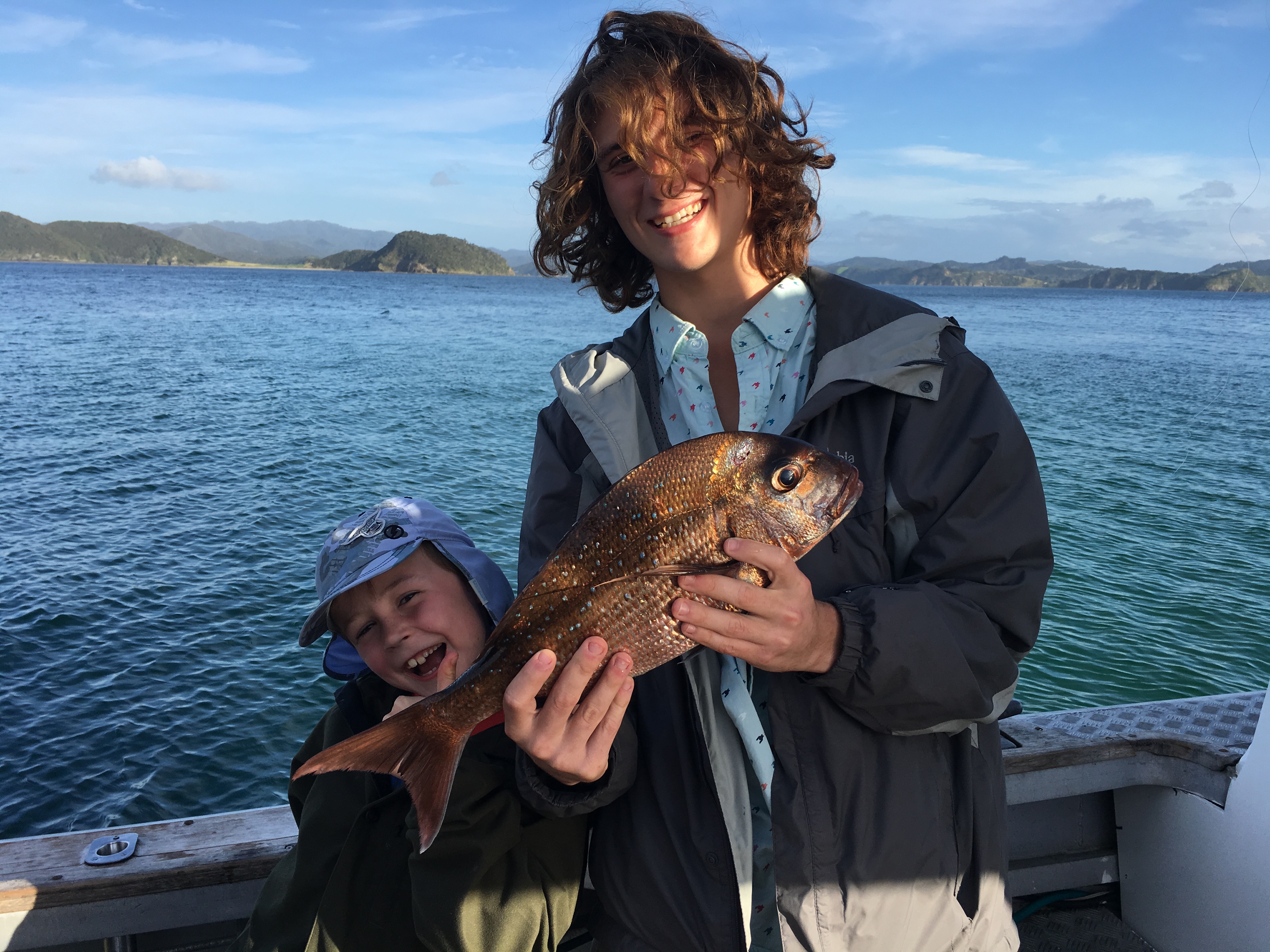
“Enjoy this while you can,” I told the teenager regarding his ability to travel for months at a time.
The youngster of our group, 9-year-old Liam, a Kiwi, photo bomber and aspiring standup comedian who was visiting during a countrywide school holiday with his mom Jo, couldn’t stop grinning.
My fellow Yank Gaddy talked about his experience tramping through the bigger cities of Auckland, Wellington and Christchurch, injuring his knee while snowboarding one of the South Island’s snowy peaks during the Southern Hemisphere winter – our summer – and pondering what was next once he gets back to the reality of life (though I became jealous again when he thought about trekking to Southeast Asia next whenever he could get away).
An Australian couple on our boat fled the chaos of Sydney for small-town life inland on the border of New South Wales and Victoria, not far from Melbourne but far enough away to enjoy the good life Down Under.
Now in New Zealand, flanked by the rugged east coast of the North Island on one side and the endless waters of the Pacific on the other, they and the rest of us were catching fish.
One guy behind me landed a feisty snapper a few minutes after we started to fish. I caught my first shortly thereafter. When little Liam reeled one up – assisted by Crooks – we all whooped and hollered for the kid.
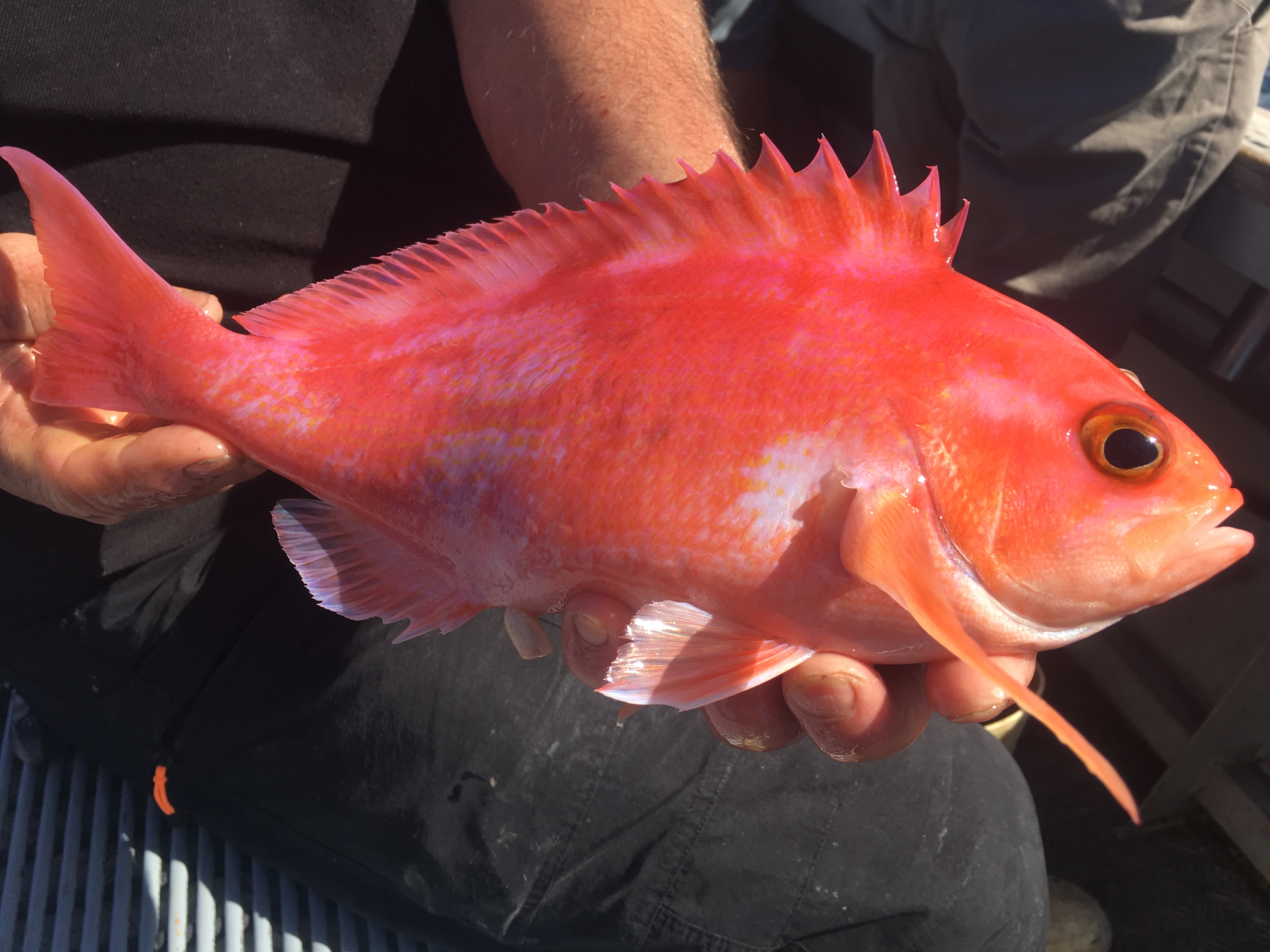

The skipper decided to change things up a little and we cruised closer to the rocky shoreline of Cape Brett, where various sea birds congregated. We anchored this time in far shallower water – about 27 feet to the bottom. Crooks also broke out tiny frozen baitfish to try. “Anchovies?” I asked. “That’s what you’d call them in the states,” the captain replied.
I slipped one on and maybe two casts later, within seconds of my bait hitting bottom I felt the hardest tug yet. This snapper, my biggest of the day – maybe 5 pounds or so – gave me a little stronger fight. Earlier in the day I’d landed what’s known as a pink maomao (longfin perch), which is a type of sea bass and one that lives up to its colorful nickname; we also brought in two more odd species, a triggerfish and a moray eel.
By the end of the day, we’d stacked the back of the Spot-X with a bunch of keeper snapper, my pink maomao and the triggerfish. Since I was the only member of this charter staying in Russell – the rest were headed back across the harbor to the bigger port of Paihia – Crooks headed into a cove and filleted the three snapper and maomao. Much to his delight, I brought back the fish for Norv and I to enjoy a delicious surf-and-turf meal cooked on a poolside grill (we had so many fillets we gave some to the motel manager).
The sun was setting after a 70ish-degree October afternoon. I was sunburned, hungry and thirsty, but during a trip when I was rarely disappointed by the scenery, food, beer, wine and activities that included Class IV-plus whitewater rafting and a jet boat thrill ride, I wondered if the North Carolinian vagabond had the right idea to spend months in a land so beautiful, mystical and prehistoric it gave the Lord of the Rings and Hobbit movies quite the cinematic backdrop. Or maybe it was Crooks who has it made, even if he did admit his workday lasts from dawn until at least 10 p.m.
Spend a week or so in New Zealand and you’ll agree it’s not a bad permanent gig. CS
Editor’s note: Spot-X Fishing Charters offers a relative bargain in a country where few comparable activities are anything but cheap. A shared, up-to-eight-person, four- to five-hour fishing trip to catch snapper and possibly larger kingfish costs 110 New Zealand dollars – roughly $75 U.S. each. Check out fishspotx.co.nz/charters for more or like them at facebook.com/fishspotX.

